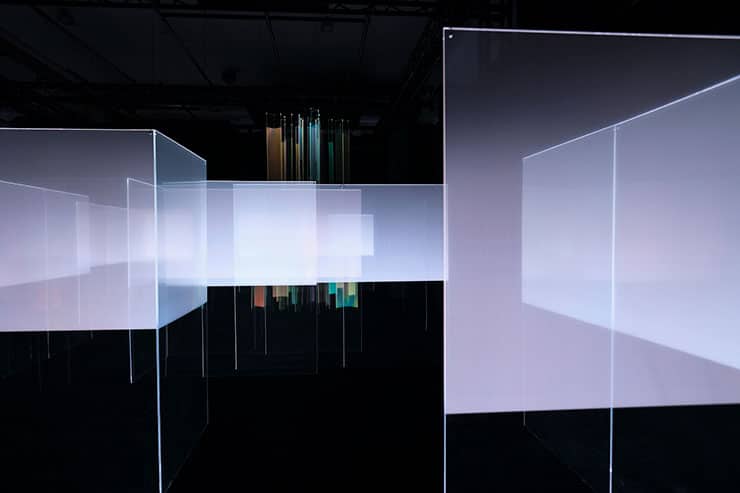- ABOUT
- JUDGING
- CONTACT
- MORE
- 2024 Entries
- Installations 2024
- Past Winners
- Subscribe
- [d]arc directory
- arc magazine
- darc magazine
Labyrinth of Light, Italy
ProjectLabyrinth of LightLocationMilan, ItalyLighting DesignLighting Planners Associates, JapanAdditional DesignTechnical Director: Yutaka Endo(Luftzug), Art Director: Takuma Hayashi (Hayashi Takuma Design Office)ClientNitto Denko CorporationPhotographyNitto Denko Corporation
Since the invention of the LED, lighting design has been a race of innovation to develop a new source of light and fitting application. However, in architectural lighting design we are entering an era that will put the real value of new technology to the test. Instead of luminous materials, materials that reflect and receive light are of more importance. Possibilities of lighting design in new spatial design rests on the application of new materials.
“Labyrinth of Light”, debuted as an installation of light at the Nitto Denko pavilion in September 2021 at “Milan Design Week 2021.” The main idea of the installation was to use a new material to create a new presentation of space. Visitors would enter the labyrinth and find this mysterious light and playful spatial presentation. Many architects and interior designers who visited the pavilion were drawn inside the labyrinth, experiencing a new sense of light and material, and were inspired by the relationship between the future of people and light.
RAYCREA, a transparent optical film, is the name of this new material. The film adheres to other transparent materials, such as glass or acrylic board, and when the edge of this material is exposed to light, only the plane with film reflects light. Also, when there is no light, the film, itself, maintains transparency and when exposed to light one side reflects light, while the other side is still transparent. The direction of reflected light is also controllable, so a plane is not only beautifully illuminated, but can also be used as a practical light fixture. The film has no length restrictions and is flexible, making it applicable to many situations. Expansion of its use is infinite.
This installation was a 7mx18m dark exhibition area with a CH=4.7m. The labyrinth was constructed with 30 acrylic 1200x2200x8 panels, affixed with RAYCREA film. The panels were stuck in a raised floor with LEDs injected under the floor from the edge of acrylic panel. Deep inside the labyrinth an object, called the Light Tree, was designed with light welling up from the ground and down from the sky.
Linearly spaced LEDs were injected from the edge of the acrylic panel to illuminate the planes affixed with RAYCREA film. Each color of the RGB LEDs was meticulously controlled, making it possible for multiple colors to blend, creating shades of colored light. Sometimes the light was a recreation of the arctic aurora borealis. Sometimes the light was monotone, like diffused Japanese-style light through opaque, paper doors. Like a symphony performed by an orchestra of light, the cords of this innovative scene of light are played by RAYCREA, LEDs and computer programming.
Visitors who entered the Labyrinth of Light had never experienced this type of physical sensation and came out a little bewildered. Not only was this the first time to lay eyes on such a novel scene, but while moving through the labyrinth, figures of people would constantly and suddenly disappear and reappear. While wandering along, somewhere this real-life experience is transposed with a virtual, visual experience.









